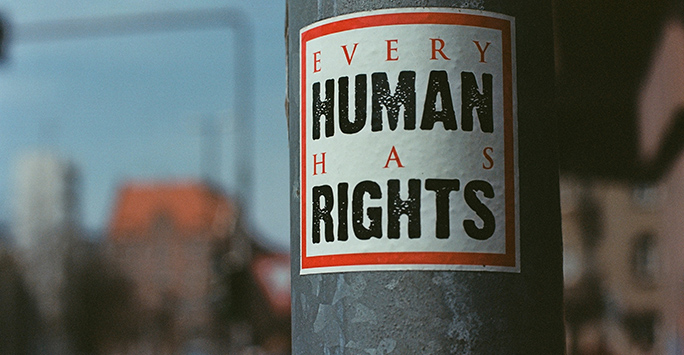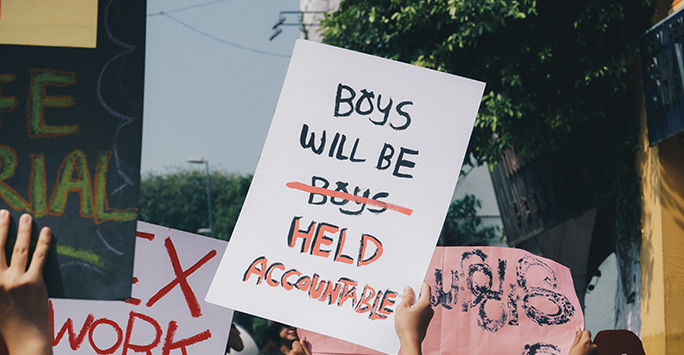Women's Rights and the Human Rights Act
Posted on: 18 October 2021 by Professor Nicola Barker in Blog

The Independent Human Rights Act Review is due to report later this month. In light of this, Professor Nicola Barker explores the impact of the Humans Rights Act on women's rights.
Announcing the Independent Human Rights Act Review in December 2020, the (then) Justice Secretary Robert Buckland stressed the need to ‘update’ the Human Rights Act (HRA). Though the Review is not due to report until the end of this month, the new Justice Secretary, Dominic Raab, renewed the government’s attacks on the Act at the Conservative Party Conference last week.
In a speech that was reminiscent of Theresa May’s now infamous 2011 speech in which she made the much ridiculed false claim that a man could not be deported because he had a pet cat, Raab highlights the case of ‘a drug dealer convicted of beating his ex-partner, a man who hadn’t paid maintenance for his daughter’, who avoided deportation by claiming his right to family life. Legal twitter tracked down the case he was referring to within hours of Raab’s speech and several commentators explained that the law in this area had already changed in 2014 following an amendment to the Nationality, Immigration and Asylum Act 2002. However, what is noteworthy about Raab’s choice of example (other than the warning it provides against lifting outdated anecdotes from 10 year old material) is that it implies that the HRA prevents the government from effectively addressing violence against women. Similarly, his predecessor Robert Buckland had also used only one concrete example of the difficulties posed by the HRA: the case of R v. A (complainant’s sexual history) [2001], in which he says ‘the HRA was used essentially to strike down the rape shield which had banned the cross-examination of rape complainants on their past sexual behaviour’. However, this judgment and its implications are much more complex than his anecdote implies, and it is by no means clear that this case was correctly decided.

There is a reason that previous commentators have cautioned against using this particular case ‘as ammunition in the well-worn debates about the effect of the Human Rights Act’. Contrary to Buckland’s implication, the HRA does not override parliamentary sovereignty and there has been plenty of opportunity in the intervening twenty years since this case for Parliament to legislate to restore the rape shield. However, successive governments did not introduce such legislation and a 2017 private members’ bill that would have strengthened the rape shield did not gain the government’s support and failed to progress beyond its first reading. In fact, in response to this Bill and wider calls for reform to better protect rape complainants following the Ched Evans case, the Ministry of Justice published a review of the rape shield provision in which it insists that the law is ‘working as Parliament intended’. In light of this, Buckland’s invocation of this particular example to justify a review of the HRA appears to be somewhat disingenuous. Nevertheless, his message is that the HRA undermines attempts by Parliament to protect women.
Leaving aside the questionable legitimacy of Buckland’s and Raab’s particular examples and taking the broader point at face value: To what extent has the Act been used as a shield by abusive men to protect themselves from the consequences of their actions or as a sword to inflict further distress on their victims, as in the case of the rape shield? And, importantly, to what extent is this the fault of the HRA itself, as opposed to problematic interpretation of the Convention jurisprudence by the UK judiciary? As part of a British Academy funded project, I undertook a gender audit of the first 20 years of case law under the HRA. While the HRA has been more useful to women’s rights in some respects than others, it is impossible to conclude that it has had an overall negative impact. Taking last year as an example, in 2020 there were 370 reported cases that mentioned the HRA. Only five of these cases involved the HRA being used in a way that (in my view) was clearly contrary to women’s rights and a further 11 cases in which this was attempted but unsuccessful. These five cases involved fair trial, family rights and free speech arguments under Articles 6, 8 and 10 ECHR being used in a way that undermined individual women’s safety, or protections that had been in place against abusive behaviour more broadly. However, though it did not result in a favourable outcome for the women on the facts in these five cases, the HRA provided a space that had not previously existed for arguments about their rights to be made. In contrast, each of the rights relied upon by the other parties either pre-dated or exists in legislation independently of the HRA. It is the women’s rights arguments in these types of cases that would become more precarious with the repeal or weakening of the HRA.
The Independent Human Rights Act Review does not explicitly consider the question of the Act’s impact on women’s rights, but if it did it would be hard pressed to make a case that the Act has been bad for women, despite the implications of the current and previous Justice Secretaries.
A Feminist Review of the Human Rights Act: 3rd December 2021
On 3rd December, we will host a workshop at the University of Liverpool and online:
A Feminist Review of the Human Rights Act will consider in more detail the impact of the HRA on the rights of women and those of minority sexes/genders and sexual orientations. For more information and to register please click here.
Keywords: Human Rights Act, Women's Rights, Human Rights Act Review, rape shield , Ministry of Justice, Conservative Party, Dominic Raab .